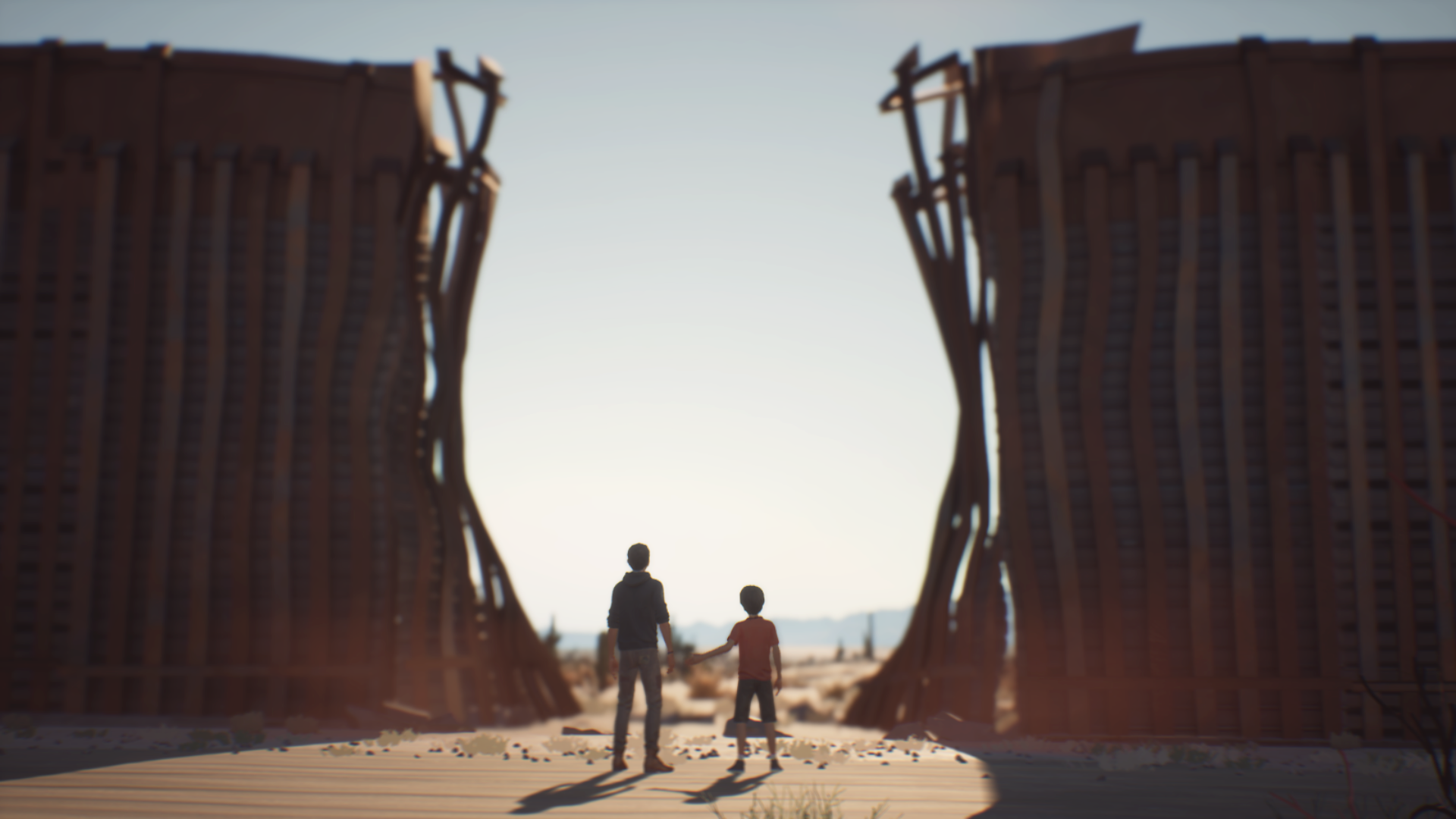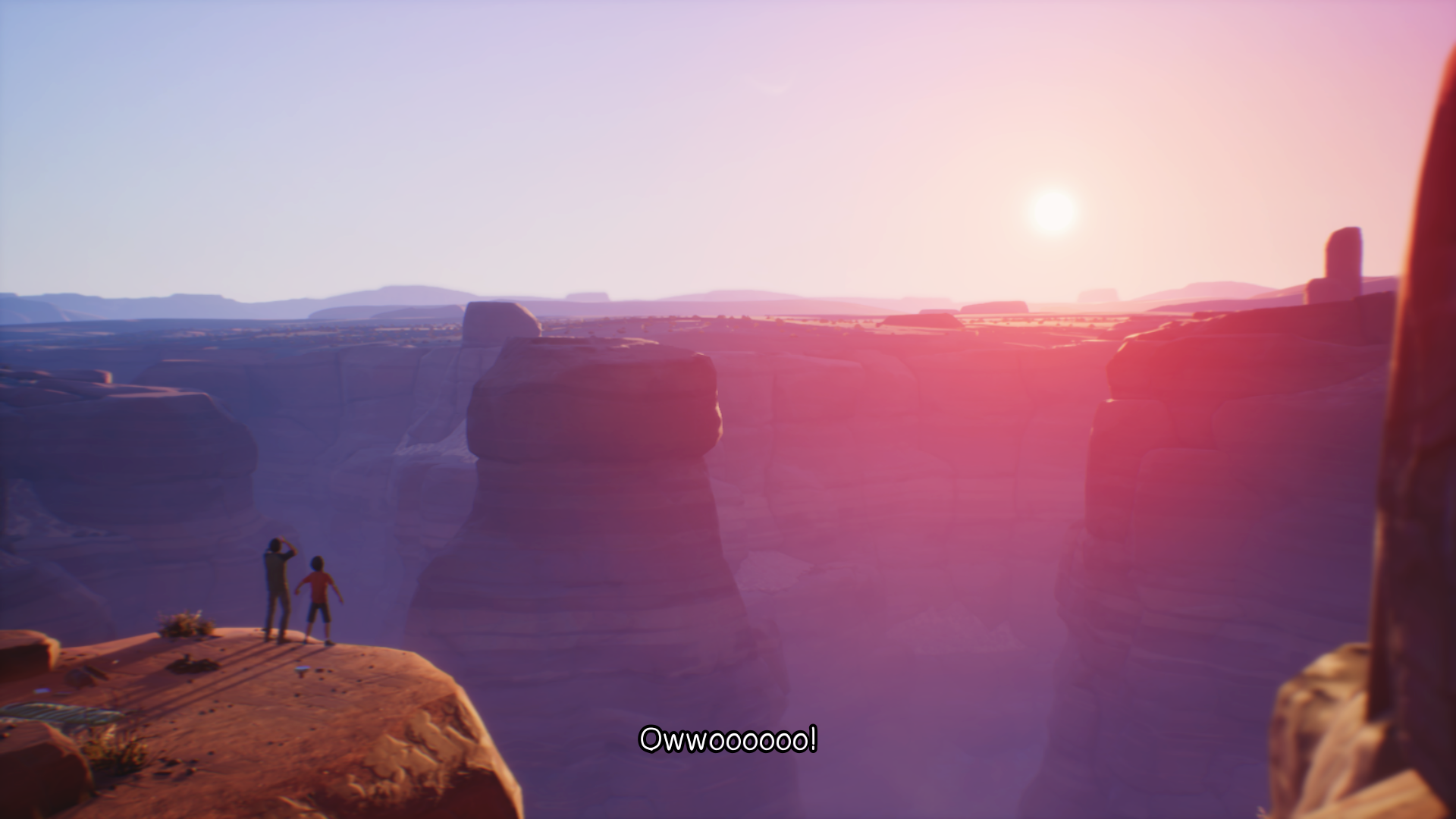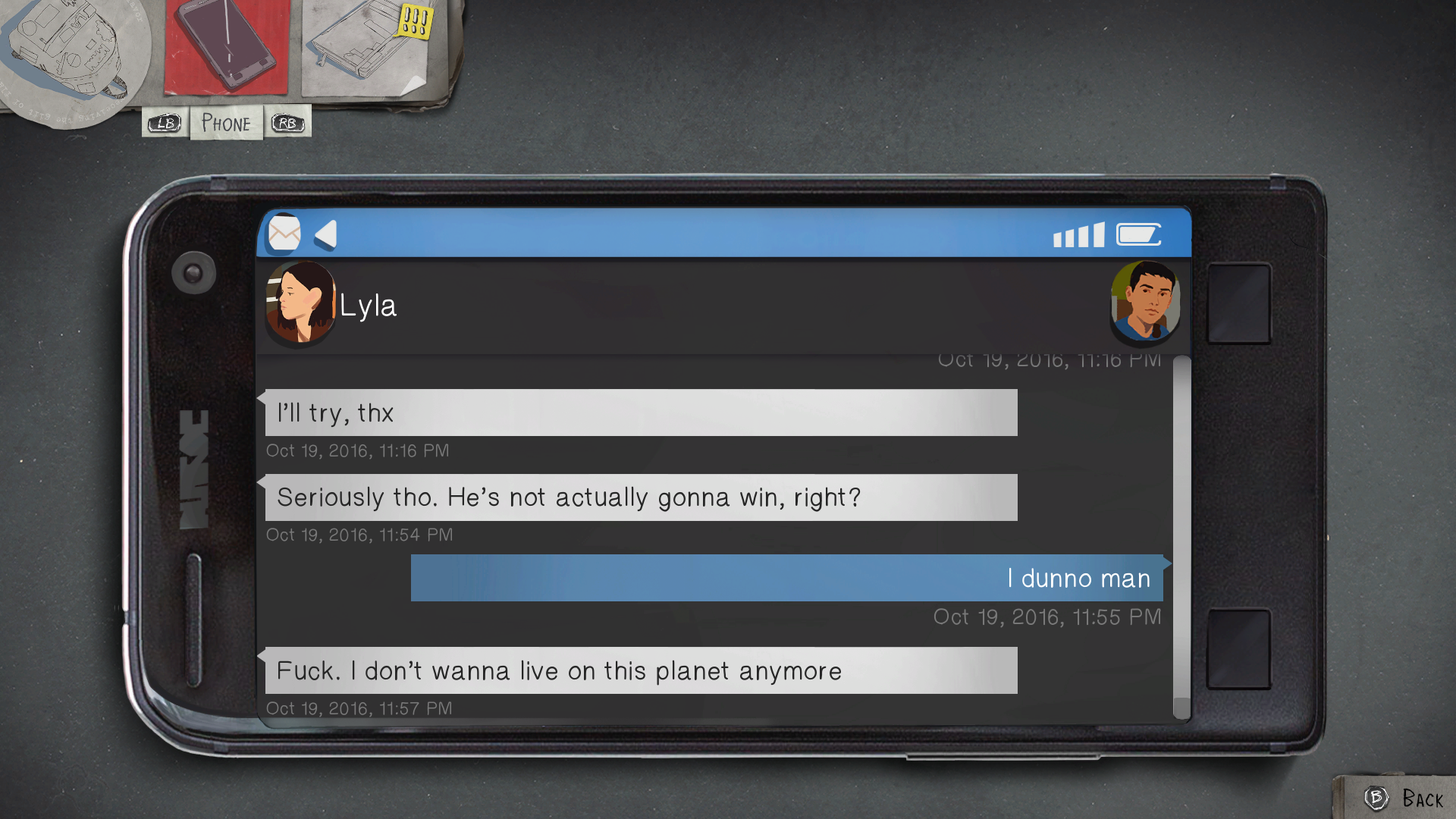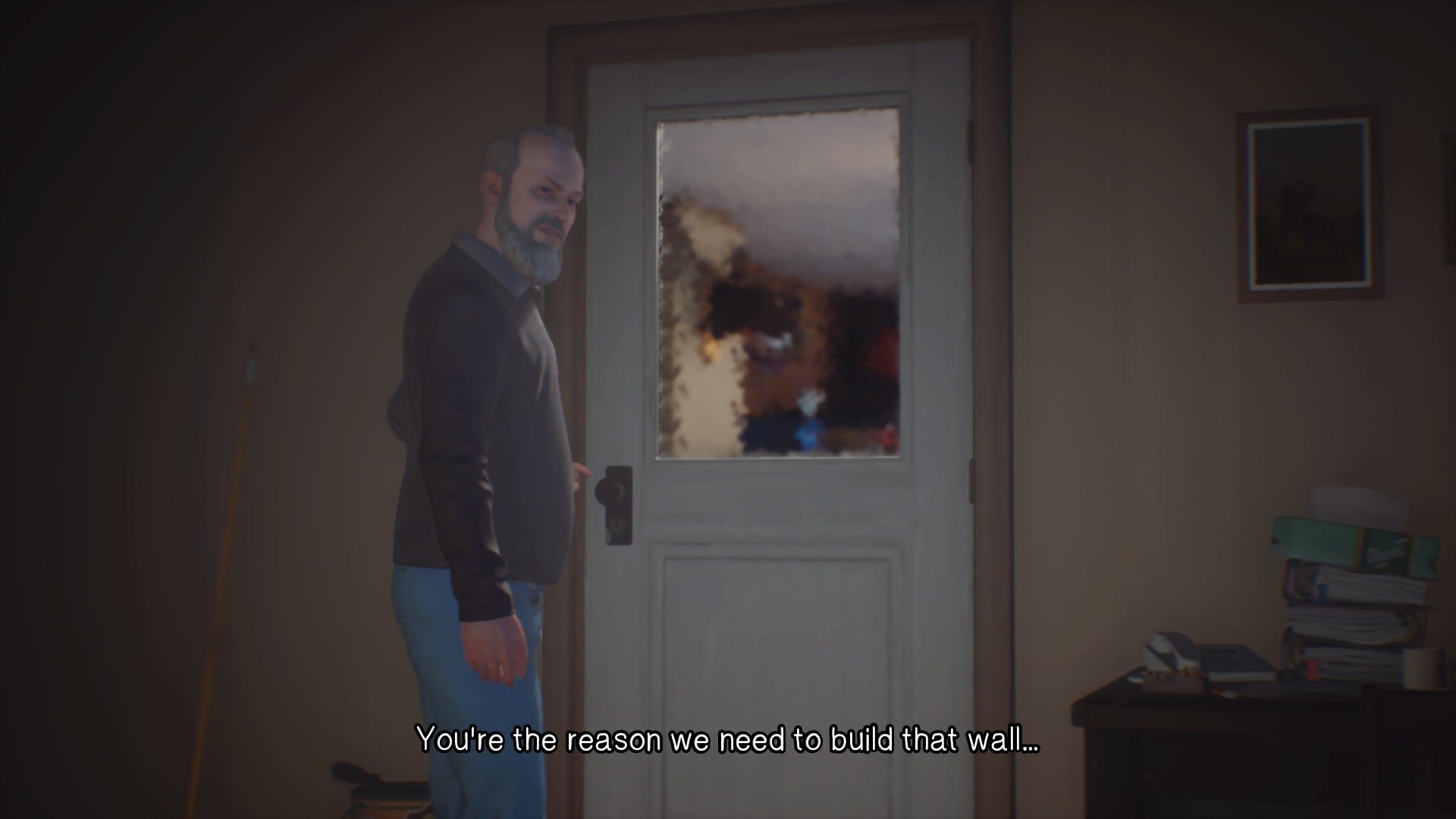REVIEW: 'Art Imitates Life,' and Life is...
A Meditation on Life is Strange 2
by Amelia Johnson
Life is Strange 2, or the latest episodic graphic adventure game from French video game developer DONTNOD Entertainment, asks you to stare directly into the face of our political climate, into the United States at the height of the 2016 election and the aftereffects, into the brotherhood of two Mexican-American boys who do not trust the system to work in their favor – and feel something.
Following on the heels of the sleeper hit Life is Strange that saved the company from bankruptcy in 2015, Life is Strange 2 was broken into five episodes released over 15 months, concluding with the release of “Episode 5: Wolves” in December 2019. Months often pass between the release of episodes in Life is Strange games, feeding you a couple of hours of story with each episode, leaving you enthralled in the DONTNOD’s strange and twisting universe, wondering what fate will bring the Diaz brothers next.
DONTNOD Entertainment
Life is Strange games are driven by choices and consequences. You might make hundreds of choices in the game – in dialogue options, in object interactions, and more – but when an Important Choice emerges, a scene will freeze completely and present your options. Big moments will have major consequences for your experience of the game in that episode, later ones, and even on the ending – which comes down to a binary choice that will have one of seven different outcomes depending on how you played the game.
Life is Strange 2’s first fifteen minutes breadcrumb every major part of the narrative – although, in typical DONTNOD fashion, you will only realize the gravity of what you are seeing upon your second playthrough.
DONTNOD Entertainment
In October 2016, 16-year-old Sean Diaz sits on the stoop smoking a cigarette (or not, depending on if you accept it) with his best friend Lyla, talking about life after high school graduation and looking forward to a party that night. Lyla watches an airplane fly overhead in the autumnal Seattle sky and says, with great emphasis, “Shit changes so fast.” After this first interaction, Sean becomes a controllable character, wandering his house in search of party supplies and interacting with his father and brother. In a conversation where Sean asks for party money, Esteban Diaz, the father of our protagonist, tells Sean to look after his 9-year-old brother Daniel and reminds him of the importance of family, sending him off with a hug and an I love you, hijo.
Gathering food, money, drinks, and a blanket in his backpack triggers a Skype call with Lyla, and as Sean sits in his room talking to his friend, through the window, Sean witnesses a confrontation between his neighbor Brett and his brother. Sean rushes out to intervene, and Brett shoves him and tells him to go back to your own country.
Family. Brotherhood. Racism. All of the recurring aspects of the plot.
An Important Choice/DONTNOD Entertainment
Here is one of the first big choices of the game: Confront Brett or Question Daniel. Either choice will end in a physical altercation that seriously injures Brett and catch the attention of a passing patrol car. Officer Matthews gets out of his car and draws his gun on the Diaz brothers. Esteban comes out of the garage to see what is going on, and when Esteban moves too close to his sons, Officer Matthews startles and shoots him. Chaos erupts, triggering a telekinetic power within Daniel, causing him to lash out and flip the police car, presumably injuring or killing the officer.
After this, Life is Strange 2 is a tense fifteen- to twenty-hour portrait of two brothers on the run from Washington to their father’s ancestral home in the fictional Puerto Lobos, Mexico – an older brother absorbing the weight of the world to protect his younger brother from the traumatic events that just happened and their potentially devastating consequences, and a child confused about the state of the world around him.
Every choice you make as Sean affects not only Sean but also Daniel’s view of the world around him. Many choices have the same narrative result but have long-term effects for Sean and Daniel’s relationship, which directly affects the end of the game. Early choices like questioning Daniel instead of confronting Brett lead Daniel to think Sean doesn’t support him, which can have lasting effects on how Daniel acts towards others and uses his budding telekinetic powers. Unlike the original Life is Strange game, where the playable main character Max Caulfield possessed superpowers and her ability to rewind time was a major element of gameplay, Life is Strange 2 does not focus on Daniel’s powers. It gives the focus instead to the brotherly bond that Sean and Daniel share and develop even more. The only way to use Daniel’s powers is to teach him how to use them and ask him to use them.

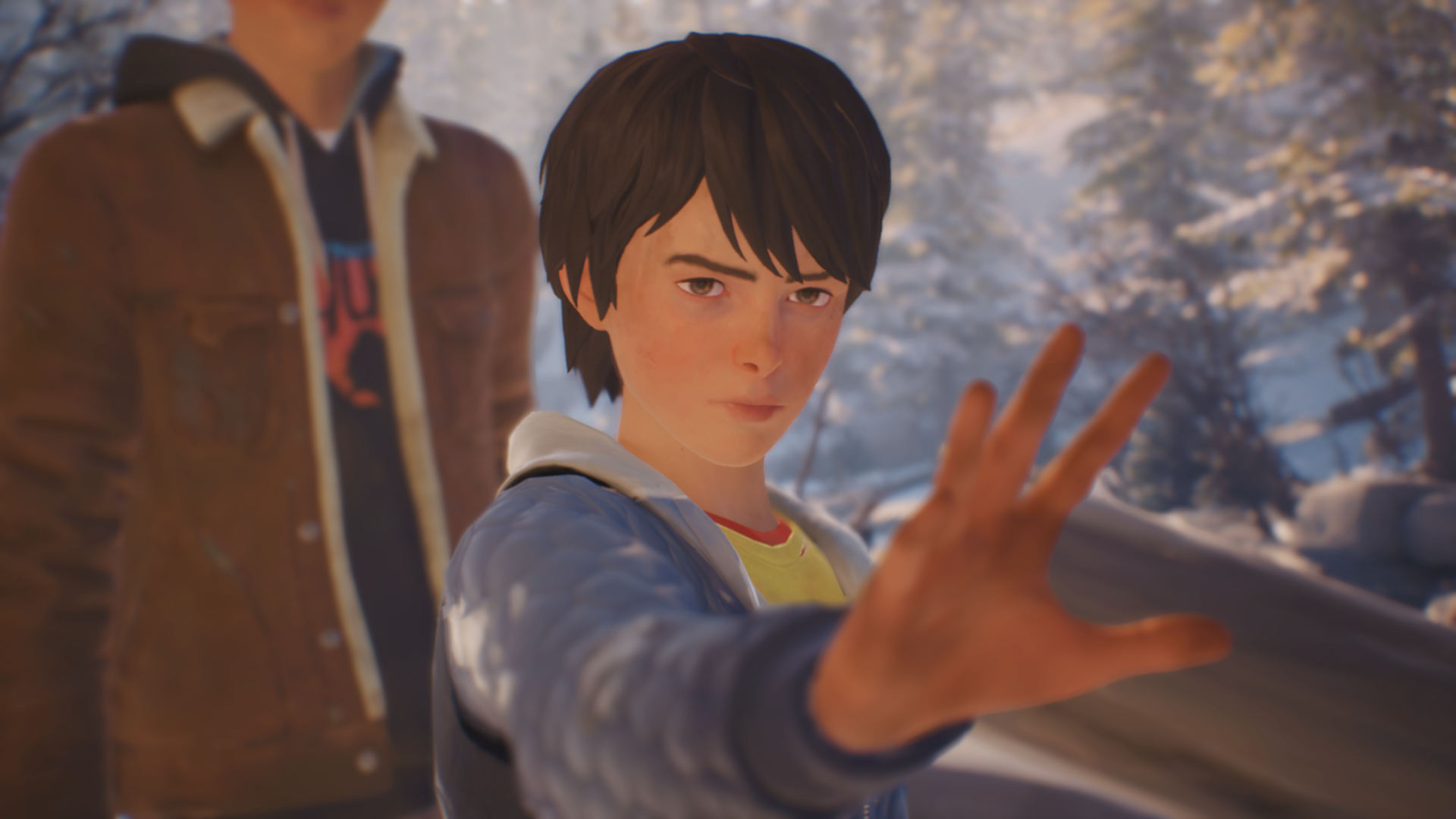
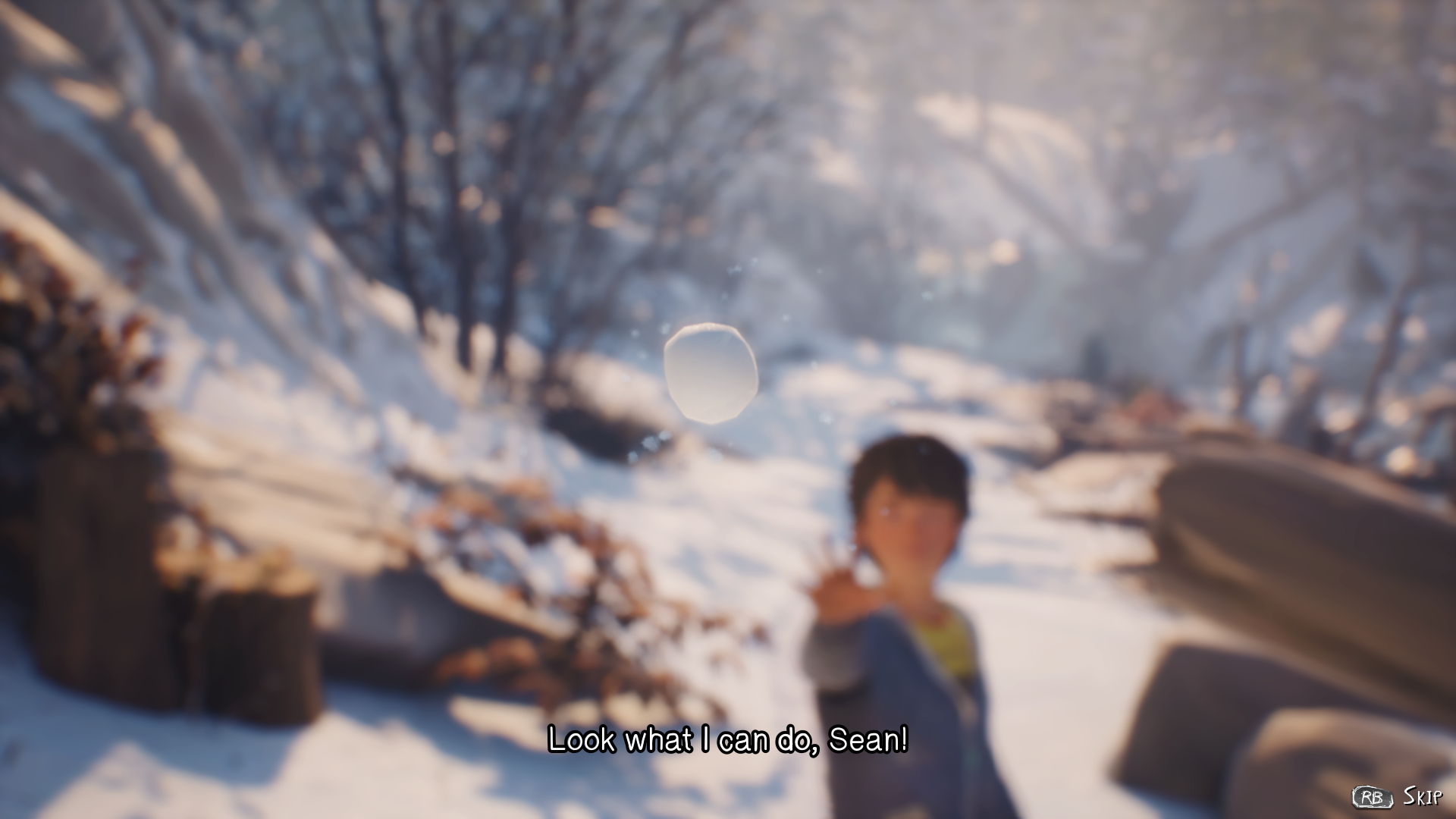
There is a moment in Episode 5 where Daniel uses his telekinesis to lift a scorpion into the air, and Sean can choose to tell him not to use his powers like that. Previous choices you made can make Daniel either listen or ignore you and continue to torment it – a seemingly insignificant moment of dialogue that is actually evidence of a larger track record of the example Sean has set for his brother. Life is Strange 2’s power lies in an ability to make you care for the characters.
Playing a Life is Strange game is like inviting a car to run over your emotions, then reverse back for good measure, and Life is Strange 2 is noticeably bleaker than the first game. Stakes feel painfully high, and I spent all 22 hours of my play-through waiting for the other shoe to drop on the Diaz brothers. Waiting for the police lights to show up in the rearview. Navigating the delicate balance between the kindness and cruelty of strangers that appear throughout the narrative.
Each episode is largely self-contained, and the length of your play-through depends on how much care you take to get to know the characters and interact with the vivid setting around you. New goals are introduced every episode that coalesce with the larger goal of making it to Mexico: for instance, Episode 3 finds Sean and Daniel on a pot farm in California, hoping to make enough money to pay their way down to the border. Things inevitably go haywire, introducing new conflicts to drive the next episodes.
DONTNOD rewards attentive gameplay by unlocking new dialogue options and allowing you to collect souvenirs you find, and if you are careful to examine the setting and find the spot that triggers it, Sean can take out his sketchbook and draw the surroundings. This was a small detail that made me love the game – an invitation to sit in this carefully crafted world and listen to the game’s beautiful soundtrack and observe.
DONTNOD Entertainment
Walking the tightrope mercy of strangers drives many of the emotional moments of the game. In Episode 1, Sean and Daniel walk into a gas station after days of walking and camping in the wilderness and are accosted by the store owner who accuses them of stealing and of being illegal immigrants. He beats Sean and cuffs him to a wall to call the police. They narrowly escape with the help of Brody, a traveling writer and stranger, who drives them to a motel and gets them a room. Later episodes see Sean and Daniel find shelter in an Arizona commune with their estranged mother; finally, make their way to the border only to be stopped by a vigilante border patrol group.
Every part of the narrative is a gut punch. Every decision asks you to question morality, family, loyalty, brotherhood, and the face of our reality.
Lead producer Luc Bagadhoust gave an interview last year explaining the responsibility that DONTNOD feels to give voice to experiences that are often overlooked in mainstream video games: “People that express themselves are now more politicized than ever. It was very important and we have a responsibility to address the topics in a very careful way.”
DONTNOD’s next project Tell Me Why, scheduled to come out this summer, will be the first video game from a large gaming studio ever to have a playable transgender character. They are known for telling narratives not often told in mainstream video games. Both of the Life is Strange games allow the main characters to explore their sexuality: depending on the choices of the player, Sean is able to share a kiss with another male character and in a dream sequence, tell his father about it.
In a world where many video games hand you powerful weapons and tell you to unplug your sense of reality for a few hours, Life of Strange 2 is an anomaly and a marvel; a lesson in empathy and an unapologetic mirror to a near-reality while not making that the focus of the game.
Upon a second play-through of the game, I opened Sean’s text messages and found a text from Lyla that says: “He’s not actually going to win, right?” Sean and Daniel travel over the course of several months and have interactions both large and small that make the game feel inextricably nested within a post-2016 election United States.
Least obvious being a blink-and-you-miss-it red hat with unreadable white text sitting on their grandfather’s desk. Most obvious being a breathtaking moment in the final episode where little Daniel Diaz stands in front of the border wall at the Arizona-Mexico border and tears a hole right through the middle with his powers.
Life is Strange 2 is unafraid to be opinionated and timely. It is a tense and harrowing narrative that only works by genuinely making the player care about Sean and Daniel Diaz, and sandwiched inside a suspenseful framework are genuinely warm and emotional moments that feel so delicate your heart will break several times. Every quiet, tender moment feels that much more so in such a high stakes narrative.
Bring tissues. I was not ready to let go of the Diaz brothers by the end.
